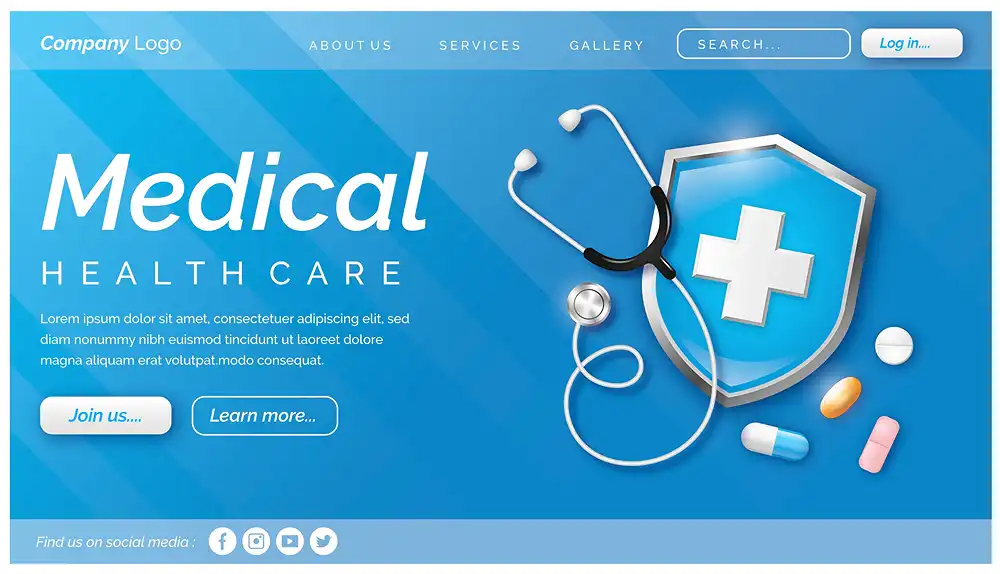Providing medical information online carries significant weight.
As a healthcare professional or a website owner publishing medical content, you have a responsibility to ensure your readers understand the limitations and qualifications surrounding your information.
This is where a well-crafted Medical Content Disclosure Page plays a vital role.
The page is designed to inform visitors about the nature of your content and establish its limitations.
This guide will take you through the steps of creating a medical content disclosure page on your WordPress website, ensuring transparency and ethical communication with your audience.
The importance of a medical content disclosure page

- Legal compliance: Disclosing the limitations of medical content and potential conflicts of interest is crucial to complying with ethical and legal regulations.
- Building trust and transparency: Clarity and transparency foster trust with your audience, enhancing their perception of your website’s credibility and objectivity.
- Protecting yourself and your audience: Disclaimers can help protect you from legal repercussions and ensure your audience understands the limitations and potential risks associated with using your information.
- Managing expectations: Providing clear disclaimers helps readers understand the scope and purpose of your content.
- Ethical responsibility: Clearly outlining the limitations and potential risks associated with online medical content demonstrates ethical conduct.
Guidelines for creating a medical content disclosure page
1. Clearly outline medical disclaimers
Start your page by clearly outlining any medical disclaimers associated with your content.
Clearly state that your content is for informational purposes only and does not constitute medical advice.
Include information on seeking professional medical guidance for specific concerns.
2. Disclose sources and references
Enhance the credibility of your medical content by disclosing the sources and references you rely on.
Provide a comprehensive list of links to reputable medical sources, studies, or organizations to support the accuracy and reliability of your information.
3. Provide author credentials
Build trust by transparently sharing the credentials of the authors contributing to your medical content.
This establishes credibility and helps readers understand the expertise behind the information presented.
Provide information about the qualifications and experience of individuals contributing to the website’s content.
4. Limitations and biases
Acknowledge potential biases or limitations inherent in your information.
Indicate if your content is for a particular set of people, race, or demographic.
5. Encouragement to seek professional consultation
Emphasize the importance of consulting a qualified healthcare professional for diagnosis, treatment, and medical advice.
Include information on how a proper physical assessment of diseases and conditions cannot be replaced by your content.
6. Disclosure of affiliations
If you have affiliate links to medical equipment, indicate your use of those links and your earnings from their use.
Disclose any potential conflicts of interest, such as financial ties to pharmaceutical companies or medical device manufacturers.
Ensure to include an affiliate disclosure on your site as well.
7. Disclaimer of liability
Clearly state that you are not liable for any consequences resulting from the use of your website’s information.
Emphasize that your content is intended for informational purposes only and should not be used as professional medical advice.
8. Compliance with regulations
Stay informed about and comply with relevant legal regulations related to online medical information dissemination.
Abide by data privacy regulations applicable in your jurisdiction and that of your audience.
9. Seek professional guidance
Consider consulting with a lawyer specializing in healthcare law for advice on crafting your disclosure page.
We recommend you employ the services of a lawyer or law firm, especially if your content is largely opinionated.
10. Use accessible and clear language
Craft your medical content disclosures using language that is accessible and easily understood by your audience.
Avoid complex medical terminology whenever possible, and use clear, plain language to convey important information.
11. Format the page professionally
Organize your page in a professional and easy-to-read format.
Employ headings, bullet points, and paragraphs to structure the information logically.
Consistent formatting contributes to a polished and trustworthy appearance.
12. Link in your website’s navigation
Boost the visibility of your page by including a link in your website’s navigation menu.
This ensures that visitors can easily access and review your disclosure statements whenever needed.
13. Provide contact information
Encourage readers to reach out if they have questions or concerns about the medical content on your website.
Including contact information, such as an email address or a contact form, fosters a sense of openness and accountability.
14. Update the page regularly
Medical information evolves, and new findings may emerge.
Regularly review and update your medical content disclosure page to reflect any changes in your content disclosure practices.
Keeping the information current demonstrates your commitment to accuracy and transparency.
Steps to creating a medical content disclosure page
- Go to Pages > Add New in your WordPress dashboard.
- Choose a title like “Content Disclosure” to be easily identifiable.
- Include all the essential elements of your medical content disclosure, following the guidelines above.
- Use formatting and styling options to enhance readability and make your page visually appealing.
- When finished, click on Publish to make your page publicly available.
- Add a link to your content disclosure page from prominent locations, like your footer or navigation menu.
Renix Consulting
Renix Consulting is a website design agency. We help businesses of all sizes create beautiful, functional, and user-friendly websites that represent their brand and achieve their online goals. Check out our portfolio for our previous projects.
Tutorials on YouTube
And if you’re looking for more in-depth WordPress tutorials,be sure to subscribe to our YouTube channel! We have a wide variety of videos on WordPress.
